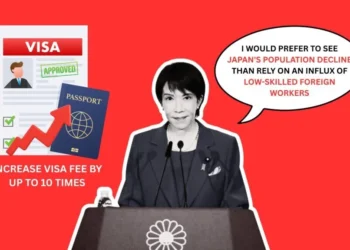No products in the cart.
Japanese Comedy: A Unique World Compared to American Stand-Up
Introduction
Comedy is a staple in the entertainment scenes of both Japan and America, yet the ways they approach humor are vastly different. Japanese comedy emphasizes physical humor, variety TV, and well-structured formats that often involve a duo, while American comedy largely relies on the individual comedian’s monologue-style performances in stand-up. In Japan, the world of comedy doesn’t just exist on a stage but flourishes through TV shows, prank-based entertainment, and culturally-rooted humor that appeals to a broad audience.
The Manzai Tradition: Japan’s Classic Comedy Duo
Manzai is a traditional form of Japanese comedy dating back centuries. It usually involves a two-person team, with one taking the role of the “boke” (funny man) and the other the “tsukkomi” (straight man). The boke is often the one making nonsensical, exaggerated statements, while the tsukkomi acts as the voice of reason, correcting the boke in a rapid-fire exchange that’s a defining feature of manzai humor. The routine usually consists of a mix of slapstick humor, puns, and misunderstandings, which creates a uniquely structured comedy.
In America, stand-up comedians typically work solo, telling stories or sharing observations directly with the audience, without a partner to play off of. This stark difference in format affects the tone and energy of comedy in both cultures. Manzai emphasizes dialogue and reaction, with the comedians feeding off each other’s energy, while stand-up allows for more introspective, observational humor that doesn’t rely on a second comedian.
Variety TV in Japan: Structured Chaos and All-Encompassing Humor
Another big aspect of Japanese comedy is variety TV, a genre that has been popular for decades. Variety shows in Japan are often fast-paced, mixing humor with games, music, and food, and they rarely take themselves too seriously. Famous programs like Gaki no Tsukai ya Arahende! and Waratte wa Ikenai focus on absurd, often over-the-top situations that push participants into bizarre or uncomfortable scenarios for laughs. Variety shows rely on carefully choreographed situations rather than the improvisational nature of American stand-up, allowing for comedic elements that require physical reactions, costume changes, and even pranks.
A hallmark of Japanese variety shows is that they can get extremely elaborate, with props, sets, and costumes that transport the hosts and guests into all sorts of comedic situations. This sort of slapstick humor, combined with recurring inside jokes familiar to the Japanese audience, makes variety TV a beloved form of entertainment in Japan. American audiences, on the other hand, are more accustomed to comedy that feels authentic and less choreographed, which can make Japanese variety shows feel confusing or over-the-top.
Japanese Pranks: Elaborate and Extreme Comedy
Pranks on Japanese TV shows are notorious for being both highly creative and intense. Prank shows are incredibly popular and are known for elaborate, sometimes intense setups designed to provoke extreme reactions. These pranks go beyond simple jokes or minor inconveniences, often involving complex sets and teams of people who ensure everything goes according to plan. A famous example is the Slippery Stairs segment on Japanese variety shows, where contestants try to climb a flight of slippery stairs, inevitably tumbling down in increasingly funny ways.
While American prank shows do exist, they often stay within a simpler format and avoid situations that could seem too intense. American humor also emphasizes a level of individualism that might make such large-scale pranks feel contrived. Shows like Punk’d have popularized celebrity pranks, but the elaborate nature and physical comedy seen on Japanese prank shows tend to surpass what most American viewers are used to.
Konto Comedy: Skit-Based Humor with a Twist
Konto is another significant part of Japanese comedy. Similar to sketch comedy in America, konto involves skit-based humor but with a distinct Japanese flavor. Each konto segment is a carefully structured sketch where performers take on specific roles, costumes, and themes to deliver a comedic narrative. Konto tends to have strong character types and situational humor, drawing from Japanese cultural references, which make it particularly popular with local audiences.
Shows like Hitoshi Matsumoto no Konto bring unique themes into konto by exploring characters and settings that have cultural significance in Japan, such as samurai or office workers. This connection to Japanese life adds an extra layer of humor that doesn’t translate as seamlessly outside of Japan. Konto typically relies on recurring characters and settings, so the humor builds as viewers grow familiar with the comedic world presented in each sketch.
Owarai: A Broader Approach to Japanese Comedy
Owarai is a broader term in Japanese comedy that covers everything from manzai to konto to variety shows. Owarai comedians are celebrities in their own right, appearing on numerous shows, commercials, and endorsements. In Japan, comedians have a broader role in mainstream media than in the U.S. They frequently act as hosts, appear in reality shows, and participate in game shows. The owarai genre gives comedians the chance to showcase different types of humor, from slapstick to witty commentary, across a variety of formats, making them accessible to a wide range of audiences.
In contrast, comedians in America tend to specialize in one particular form of comedy, such as stand-up or sketch. While comedians in Japan are expected to bring humor to nearly any scenario, American comedians often carve out a specific niche or style that they’re known for. This difference can make Japanese comedy feel like a more pervasive part of everyday entertainment.
The Cultural Context of Humor in Japan
Japanese humor is deeply influenced by cultural norms and the value placed on harmony within society. For example, Japanese comedians often use self-deprecating humor or play exaggerated versions of themselves, allowing audiences to laugh without discomfort. The physical comedy and visual gags also make Japanese humor accessible to those who might struggle with verbal humor due to language barriers.
By contrast, American comedy often uses sarcasm, satire, and observational humor to make points about societal issues. Political and social commentary are central to many stand-up routines in America, with comedians using their platform to critique and analyze cultural phenomena. In Japan, however, comedians tend to avoid controversial or divisive topics to maintain an atmosphere that feels inclusive and harmonious for all viewers.
Why Japanese Comedy Isn’t Just About Laughter
Japanese comedy is not only a source of entertainment but also serves as a cultural reflection, showcasing the unique aspects of Japanese society. Comedy in Japan fosters a sense of community by focusing on shared, relatable situations that people experience in everyday life. Whether it’s the frantic workplace skits of konto, the structured chaos of variety shows, or the quick-witted exchanges in manzai, Japanese humor embodies the nuances of Japanese life and offers a comedic escape that resonates on multiple levels.
In America, stand-up comedy often acts as a form of self-expression, with comedians using humor as a lens to share personal stories, societal observations, and sometimes even difficult truths. This style encourages individual voices and perspectives, while Japanese comedy emphasizes collective experiences, making it more universally approachable within Japanese culture.
Conclusion: A Comedy Style of Its Own
While American comedy is often defined by individual performance and social commentary, Japanese comedy thrives on collaboration, structure, and cultural context. Each style brings something unique to the world of humor, appealing to different tastes and preferences. Japanese comedy may seem foreign to American audiences, but its roots in cultural customs and its embrace of physical and visual gags make it distinct and engaging in its own right.










